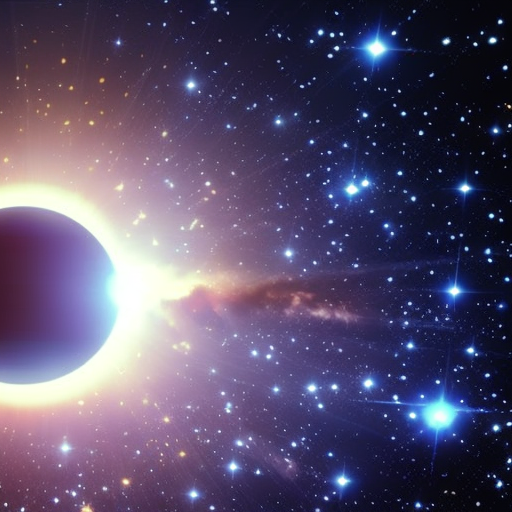Summary: Neutron stars are incredibly dense celestial objects that form after the collapse of a massive star during a supernova explosion. They are composed almost entirely of neutrons and have a mass greater than that of the Sun but a radius of only a few kilometers. Neutron stars have extremely strong gravitational and magnetic fields, and they emit radiation across the electromagnetic spectrum. They are also the source of various astrophysical phenomena, such as pulsars and gamma-ray bursts.
Formation and Composition:
Neutron stars form when a massive star runs out of nuclear fuel and undergoes a supernova explosion. During this explosion, the star’s core collapses under its own gravity, causing protons and electrons to combine and form neutrons. The resulting neutron star is composed almost entirely of neutrons, with a thin crust of iron and other heavy elements. Despite their immense mass, neutron stars are incredibly compact, with a radius of only about 10 kilometers.
Properties:
Neutron stars are known for their extreme density. The matter in their core is packed so tightly that a teaspoonful of neutron star material would weigh billions of tons on Earth. This density gives rise to an incredibly strong gravitational field, which can be millions of times stronger than Earth’s gravity. Neutron stars also have powerful magnetic fields, thousands of times stronger than Earth’s magnetic field.
Pulsars:
One of the most fascinating phenomena associated with neutron stars is the existence of pulsars. Pulsars are highly magnetized, rapidly rotating neutron stars that emit beams of electromagnetic radiation. As the neutron star spins, these beams sweep across space like a lighthouse, causing periodic bursts of radiation to be observed on Earth. Pulsars can rotate hundreds of times per second, and their emission can be detected across a wide range of wavelengths, from radio waves to X-rays.
Gamma-Ray Bursts:
Another important phenomenon associated with neutron stars is gamma-ray bursts (GRBs). GRBs are extremely energetic explosions that release a tremendous amount of gamma-ray radiation. They are thought to occur when a massive star collapses into a black hole or when two neutron stars merge. These events release vast amounts of energy in the form of gamma rays, which can be detected by satellites orbiting Earth. GRBs are among the most powerful explosions in the universe and can be observed from billions of light-years away.
Observations and Research:
Scientists study neutron stars using a variety of observational techniques. They use radio telescopes to detect pulsars and study their emission properties. X-ray and gamma-ray telescopes are used to observe the high-energy radiation emitted by neutron stars and to study the mechanisms behind gamma-ray bursts. In recent years, the discovery of gravitational waves has also provided valuable insights into the behavior of neutron stars during mergers.
Importance and Future Research:
Neutron stars are of great importance to astrophysics and our understanding of the universe. They provide insights into the behavior of matter under extreme conditions and help us test theories of gravity and nuclear physics. Future research will focus on studying the properties of neutron stars in more detail, including their internal structure, composition, and the mechanisms behind their emission of radiation. Additionally, the detection of gravitational waves from neutron star mergers will continue to provide valuable information about these enigmatic objects.
In conclusion, neutron stars are incredibly dense celestial objects that form after the collapse of massive stars. They have unique properties, including extreme density, strong gravitational and magnetic fields, and the ability to emit radiation across the electromagnetic spectrum. Neutron stars give rise to fascinating phenomena such as pulsars and gamma-ray bursts, which continue to be the focus of scientific research. Studying neutron stars provides valuable insights into the behavior of matter under extreme conditions and helps us unravel the mysteries of the universe.












